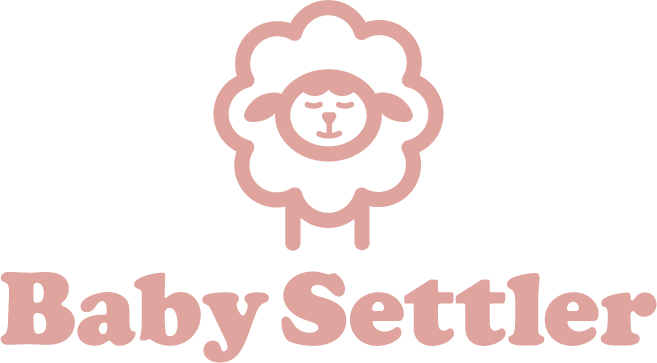
Making the switch from breast milk or formula to whole milk can be a daunting task for some parents, but with a little preparation, it can be a smooth transition for both you and your baby. Here are ten reasons why you need to make the switch at one year of age and how to make the switch as seamless as possible.
The Nutritional Value of Whole Milk, and Why You Should Switch
Whole milk is an excellent source of nutrition for 1-year-olds. It is packed with calories, fat, and protein, which are essential for a child’s growth and development. Whole milk also contains vitamins and minerals that are important for a child’s health.
The American Academy of Pediatrics recommends that 1-year-olds consume whole milk to meet their nutritional needs. However, some parents may be concerned about the fat content of whole milk. It is important to remember that fat is an essential nutrient for young children. A child’s brain is composed of 60% fat, and fat is necessary for the absorption of certain vitamins and minerals.
As with any new food, it is a good idea to introduce whole milk in small doses to your one-year-old. He or she may respond differently to the taste than you might expect. Keep in mind that many store-bought brands of whole milk have added sweeteners and this can negatively impact the taste even if the milk itself is not sweet.
Whole milk can be introduced into a child’s diet gradually. Parents can use milk and other foods with a gradual milk introduction diet approach. This method allows young children to adapt to new foods and flavors while minimizing fussing and feeding disruptions.
How to Make the Transition to Whole Milk
It’s time to make the switch from formula or breast milk to whole milk! Here are some tips to help you transition your 1-year-old:
1. Start by mixing whole milk with formula or breast milk. Gradually increase the amount of whole milk until your child is drinking all whole milk. It is usually recommended that you start with a 50/50 mixture for a week or so, and then gradually increase the whole milk.
2. Ditch the bottle. If your baby is still drinking formula from a bottle, he or she will have a harder time adjusting to whole milk if that’s the only way they get food. Try feeding them in a high chair or on a regular chair at the table.
If you’re breastfeeding, you can transition your baby to whole milk by slowly mixing in some whole milk at each feeding until your baby is eating mostly whole milk.
3. Watch portion sizes at first. With whole milk, it’s easier to eat more food than with formula or breast milk, so it’s important to watch portion sizes. Those already large servings your 1-year-old is used to at the table might fill him or her up far past their comfort zone if they are drinking whole milk instead of formula. Once they are accustomed to the new milk, their typical serving sizes should return to normal.
4. Tell yourself (and your child) off before you start. Try to prepare yourself (and your child) for the first taste of whole milk by telling yourself (and your child) how tasty it is before you even open the bottle. This technique is called describing and can also be helpful when introducing other new foods to your child.
5. Keep other foods the same. Try to keep all of your child’s other meals the same as they have been so that any changes in one meal don’t create too many new expectations for your child.
6. Watch for signs of a strong reaction. Some children get gastrointestinal (GI) disturbances from the protein in whole milk, so you may see signs like irritable bowel syndrome (IBS), bloating, or gas. These symptoms usually aren’t too serious and should calm down as your child gets used to the new milk. If they don’t, or if your child has other signs of a strong reaction, such as rashes, hives, coughing, or severe diarrhea, call your child’s doctor immediately.
7. Make it a fun family event. Celebrate the transition to whole milk with a special family meal or snack. Also, just simple gestures of encouragement go a long way with young children. A simple “yay” or clapping of the hands reinforces that they are doing the right thing.
8. Beware of too much protein. While parents may assume that more protein is a good thing for a picky eater, providing too much protein can cause problems with growth. Generally, children between the ages of one and three need about 13g of protein a day. Keep total protein intake within the recommended amount.
9. Serve milk with meals and snacks. This will help your child get used to the taste and texture of whole milk. And, it will reinforce healthy eating habits, as food is often paired with milk in the American diet.
10. Consider flavored milk. You may want to try flavored milk, which can be a fun treat for children. Make sure the flavoring is safe (the ingredients are safe for children, and the amount of sugar is within the recommended limits for your child’s age).
What About Mom? How to Weaning Yourself if You are Breastfeeding
Some mothers feel a sense of loss or anxiety about weaning their child from breast milk. It’s natural to be attached to your baby after nourishing him or her for a year (or longer, if you planned on feeding your baby long-term).
So, how do you wean yourself? There are different stages of weaning. You may have already weaned yourself from night feedings and other close proximity to your baby. But you may still be breastfeeding while your child is eating solid foods. That’s fine – you can do them all in any order or combination that works for you and your family. But if you’d like to go further, you can completely wean from breast milk, too. Weaning yourself can happen just as naturally as weaning your child from the breast.
Keep in mind that how you wean your child doesn’t necessarily set the pattern for weaning yourself. You can choose what works for you. For example, you may choose to gradually reduce your milk production by a smaller amount or decrease the frequency of feedings. You may also choose to stop breastfeeding completely after introducing whole milk to your child or choose to stop breastfeeding completely before introducing whole milk. Both patterns are common and acceptable. Talk to your partner and other trusted adults for support and ideas. And remember, weaning yourself (or your child) from the breast is a natural process – don’t stress out or rush it!
With these tips, you should have no trouble making the transition to whole milk in a smooth and successful way. Remember…you do you! You might be inclined to follow all the recommendations you hear about weaning your child from breast milk or formula. Keep in mind that what works for one child, family, and doctor might not be the best for you and yours.
Also, it’s important to realize that you only have to make this transition once; after your child has had a taste of whole milk at 12 months, you can rest assured that they will always know how to drink milk. So, if you’re worried about the process, remind yourself that it won’t be like introducing vegetables—you only have to do it once!




